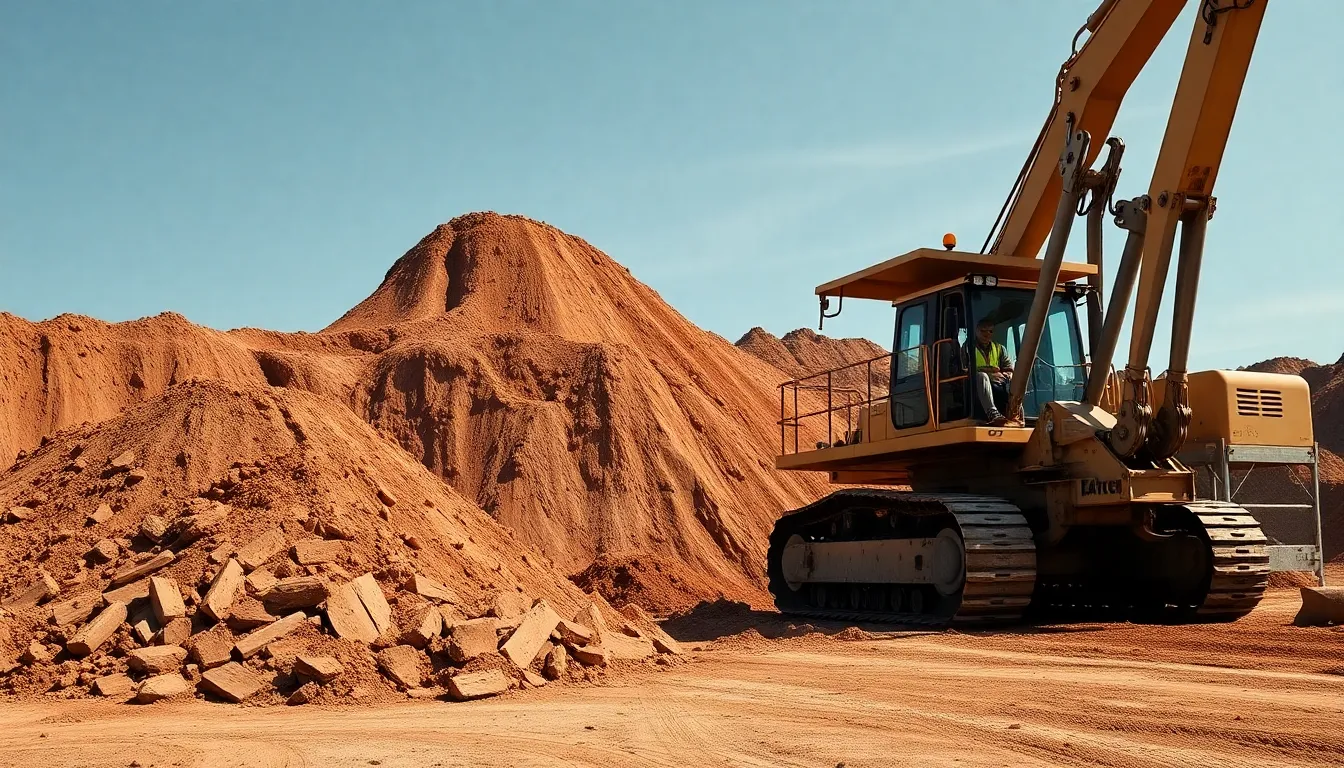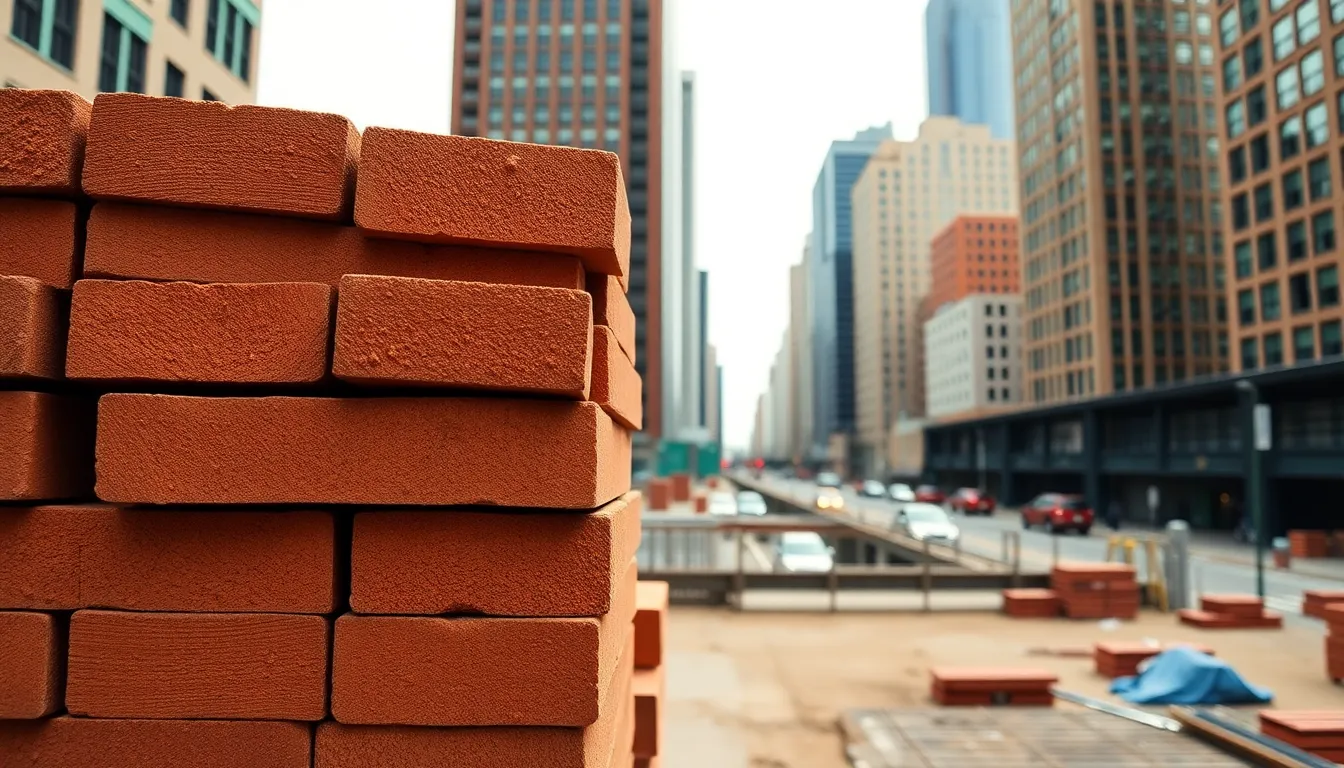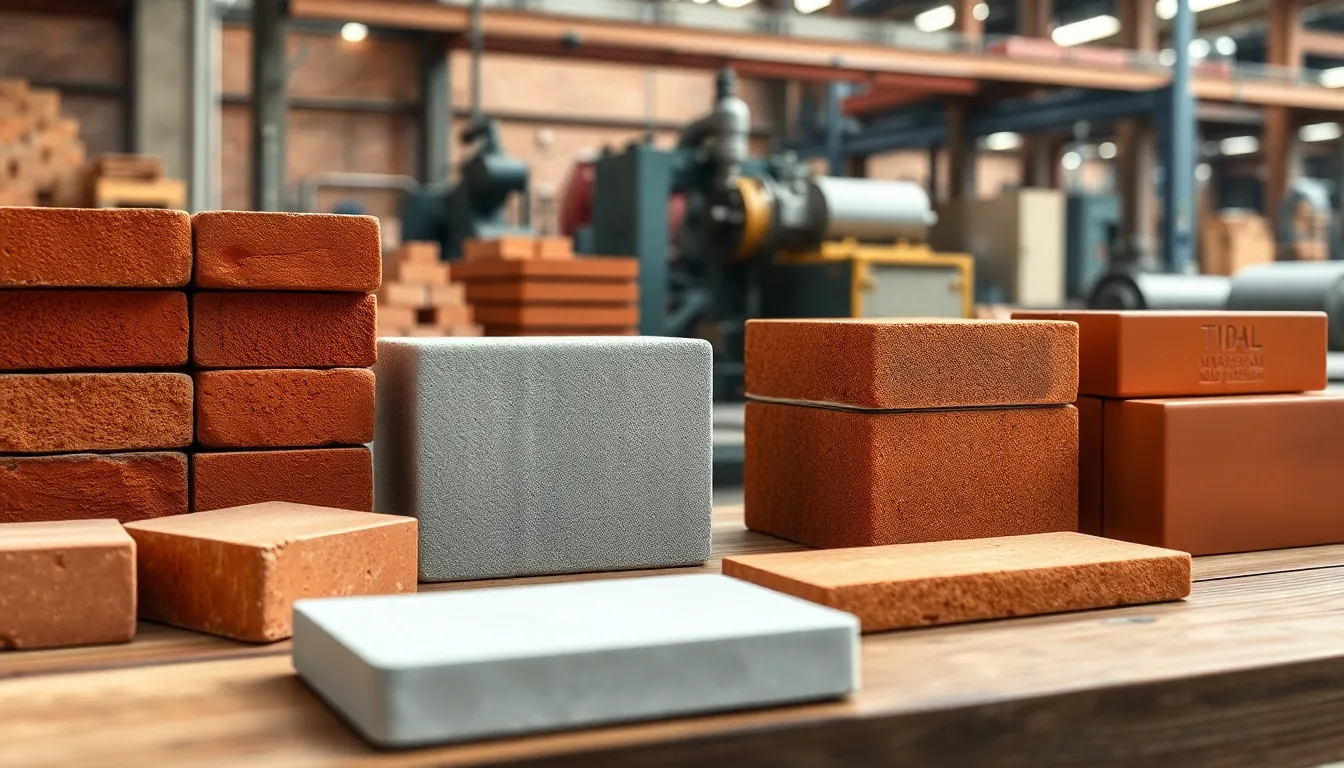Key Takeaways
- Clay is a primary material in traditional brick manufacturing, valued for its plasticity, fine-grained structure, and widespread availability.
- Bricks can also be made from alternative materials such as shale, concrete, and calcium silicate, with each type offering unique benefits for different construction needs.
- Clay bricks are known for their durability, compressive strength, thermal insulation, and fire resistance, making them a popular choice in both residential and commercial structures.
- Modern brick manufacturing often involves automated processes, additives, and quality control measures to ensure consistent performance and meet specific project requirements.
- Despite their advantages, clay bricks have limitations such as higher water absorption, variable size tolerances, and higher energy consumption during firing compared to some alternative brick types.
Clay serves as a primary material in traditional brick manufacturing due to its plasticity, fine-grained structure, and widespread availability. These natural properties enable reliable moulding and consistent quality during the firing process, producing bricks with excellent compressive strength and weather resistance. Modern manufacturers utilise advanced clay brick making machine technology to automate production whilst maintaining precise dimensional tolerances and optimal performance characteristics for residential and commercial construction applications.
What Are Bricks Made Of?
Bricks typically contain clay, shale, concrete, or calcium silicate as their main materials. Clay bricks use natural clay, which Lontto processes using extrusion and high-temperature kiln firing at its Chicago facility. Shale bricks use finely crushed shale with a similar firing process. Concrete bricks combine Portland cement, sand, and aggregate, then cure them in molds using hydraulic block making machines, such as those Lontto supplies. Calcium silicate bricks use sand and lime which get pressed and autoclaved to set the material.
Manufacturers select the main material based on the strength, color, and durability needed for the project. For example, clay bricks show high weather resistance, while concrete bricks suit high-volume production with automatic block making equipment. Lontto equipment in Chicago supports all these brick types with molding, mixing, curing, and firing solutions.
Additives like fly ash, iron oxide, or quicklime adjust color, texture, and performance in selected bricks. Lontto‘s block machine lines integrate options for automatic measurement and mixing to maximize efficiency and quality control across all standard brick compositions.
The Role Of Clay In Brick Manufacturing

Clay acts as a primary raw material in traditional brick production. Brick manufacturers prefer clay for its widespread availability and reliable molding properties, which support consistent quality in fired bricks.
Properties Of Clay Suitable For Bricks
Clay suitable for brick manufacturing features a fine-grained structure, plasticity, and low organic content. Fine particles, such as those in kaolinite or montmorillonite examples, allow easy shaping and uniform texture. Plasticity ensures the clay holds shape after molding, supporting automated extrusion lines. Low organic and soluble salt content prevents defects and discoloration during firing, producing stable and uniform-colored bricks. Testing for mineral content and shrinkage rate, common during equipment calibration with Lontto machines in Chicago, helps producers select the ideal clay sources for consistent brick quality.
How Clay Is Prepared For Brickmaking
Clay goes through extraction, seasoning, and tempering before use in brickmaking. Extraction pulls clay from natural deposits using excavators, while seasoning exposes raw clay to air so excess moisture escapes, preventing cracks in molded bricks. Tempering mixes clay with precise water volumes and often other additives like sand, optimizing workability and reducing warping during firing. Lontto’s automated mixers handle this process, maintaining consistent texture and moisture for large-scale production. Proper preparation supports reliable extrusion, uniform drying, and stable firing outcomes in high-quality brick manufacturing.
Types Of Bricks: Clay Versus Alternatives

Brick types depend on raw materials, manufacturing steps, and performance targets. Material choices affect texture, strength, and best-fit construction applications.
Clay Bricks
Clay bricks use natural clay as the main raw material. Producers extract the clay, remove impurities, and prepare it for molding. Lontto equipment supports extrusion and high-temperature firing that achieves consistent compression strength, at 3,500 to 5,000 psi for standard units. These bricks deliver reliable water resistance, controlled color ranges, and uniform dimensions. Building sites choose clay bricks for weather-facing structures, load-bearing walls, and fire-resistant partitions. Lontto‘s automated lines maintain moisture uniformity and precise shaping for large-volume runs in Chicago or at global project locations.
Concrete And Fly Ash Bricks
Concrete and fly ash bricks combine cement, aggregates (like sand or stone dust), and fly ash in fixed ratios. Concrete bricks reach compressive strengths of 3,000 to 4,500 psi, while fly ash bricks often exceed 4,000 psi thanks to pozzolanic chemical reactions. Precision Lontto molds yield tight tolerances, sharp edges, and customizable block dimensions. These bricks retain shape under heavy loads and resist sulfate attack, making them suitable for industrial and commercial use. Lontto machines enable rapid curing and high output, finishing each batch with uniform density and finish for regional construction needs, including those in the greater Chicago area.
Advantages Of Clay Bricks
Clay bricks provide proven strength and durability for structural walls and facades in both residential and commercial construction. Fired clay bricks display compressive strength ratings from 10 MPa to over 40 MPa, matching typical requirements for load-bearing walls and multistory structures, according to ASTM C62 standards. Dimensional stability supports precise wall alignment, as the uniform size of machine-made clay bricks eliminates issues found in handmade or concrete alternatives.
Thermal insulation slows temperature transfer through wall sections. Fired clay readily stores and releases heat, helping to stabilize indoor temperatures and reduce reliance on HVAC systems. This energy-saving property fits well with sustainable building certifications. Sound dampening further reduces noise transmission, making clay brick walls effective for urban and high-density buildings.
Natural water resistance protects against rain and moisture. Dense surface texture limits water absorption, which prevents efflorescence and minimzes freeze-thaw damage. Clay’s inert composition resists fire—fired clay bricks achieve fire ratings that satisfy major building codes in North America.
Long-term color retention keeps structures attractive over decades. Machine-molded and wire-cut finishes allow precise surface designs without artificial pigments. Lontto’s advanced firing and shaping systems in Chicago maintain tight dimensional tolerances so every brick batch delivers consistent performance and finish quality. Clay bricks also support a low-maintenance lifecycle—surfaces resist rot, insects, and heavy impacts, minimizing repair costs for building owners.
Limitations Of Clay Bricks
Clay bricks present several performance and application limitations in construction projects. Water absorption in fired clay bricks measures between 12% and 20%, which enables moisture ingress and can cause surface efflorescence, especially in humid conditions or poorly protected masonry. Compressive strength values of standard clay bricks, ranging from 10 MPa to 20 MPa, restrict their use for heavy-duty structural elements and high-rise load-bearing walls compared to engineered concrete blocks or fly ash bricks. Size and shape tolerances in molded clay bricks show minor variations across production batches, which necessitates thicker mortar joints and routine adjustments during wall alignment.
Thermal conductivity of clay bricks, with values from 0.6 to 1.0 W/m·K, outperforms concrete blocks, but they still transmit more heat than insulation-grade AAC blocks. During the high-temperature firing process, energy demand for clay brick kilns increases operational costs and carbon emissions, unlike bricks produced by cold processes like calcium silicate or fly ash bricks. High-volume clay brick production requires consistent raw material supply and spacious kiln installations, which can challenge rapid jobsite deployment in urban sites with strict environmental standards.
Lontto addresses these limitations by offering automated brick machines and batch mixers that maintain stable size and shape tolerances and support alternative brick materials. Lontto‘s installations in Chicago and North America optimize clay consumption through efficient extrusion, reduce thermal energy needs during firing, and enable seamless adaptation to concrete or fly ash production lines.
About Lontto
Lontto, based in Chicago, IL, is a leading manufacturer specialising in block and brick making machines.
Under the leadership of CEO Chao Zhang, Lontto offers a wide range of products including concrete block machines, mobile block making machines, and compressed earth block machines. In addition to manufacturing, Lontto provides installation and training services to ensure the efficient operation of their equipment, helping clients achieve high-quality production results.
Contact:
Chao Zhang, CEO
Phone: 708 260 8300
Email: [email protected]
Address: 4992 S Austin Ave, Chicago, IL 60638, USA
Website: www.block-machine.net
Frequently Asked Questions
What are bricks made of?
Bricks can be made from a variety of materials, including clay, shale, concrete, and calcium silicate. The choice of material depends on the required strength, color, and durability for specific construction projects.
Are all bricks made only from clay?
No, not all bricks are made solely from clay. While clay is a common material, bricks can also be made using shale, concrete, calcium silicate, and other additive materials to achieve specific properties.
Why is clay commonly used in brick production?
Clay is widely used because it’s naturally abundant, easy to mold, and offers ideal properties like plasticity and fine texture. Fired clay bricks are known for their strength, durability, and consistent quality.
What are the main types of bricks used in construction?
The main types include clay bricks, concrete bricks, fly ash bricks, and calcium silicate bricks. Each type is chosen based on strength, durability, weather resistance, and specific building requirements.
How do clay bricks compare to concrete bricks?
Clay bricks offer good compressive strength, water resistance, and thermal insulation. Concrete bricks, on the other hand, are stronger for heavy loads and are often used in commercial and industrial construction.
What are the benefits of using clay bricks for building?
Clay bricks are strong, durable, water-resistant, fire-resistant, and help regulate indoor temperatures. They retain color well and require low maintenance, making them an excellent choice for many structures.
Are there any limitations to clay bricks?
Yes, clay bricks can absorb water, leading to efflorescence and moisture ingress. Their strength may be less than that of engineered concrete or fly ash bricks. They also have high energy demands for firing and may not offer as much insulation as AAC blocks.
How do manufacturers ensure consistent quality in bricks?
Modern manufacturers use automated equipment for mixing, molding, and firing, which helps maintain tight dimensional tolerances and consistent quality across batches. Additives can also enhance brick properties.
What factors influence the choice of brick materials for a project?
Factors include desired strength, durability, color, cost, climate conditions, regulatory standards, and the specific structural requirements of the building project.
How does Lontto contribute to modern brick-making?
Lontto provides advanced machinery and automation for brick production, supporting efficient molding, mixing, curing, and firing. Their equipment helps produce high-quality bricks with precise tolerances for both local and international construction needs.
